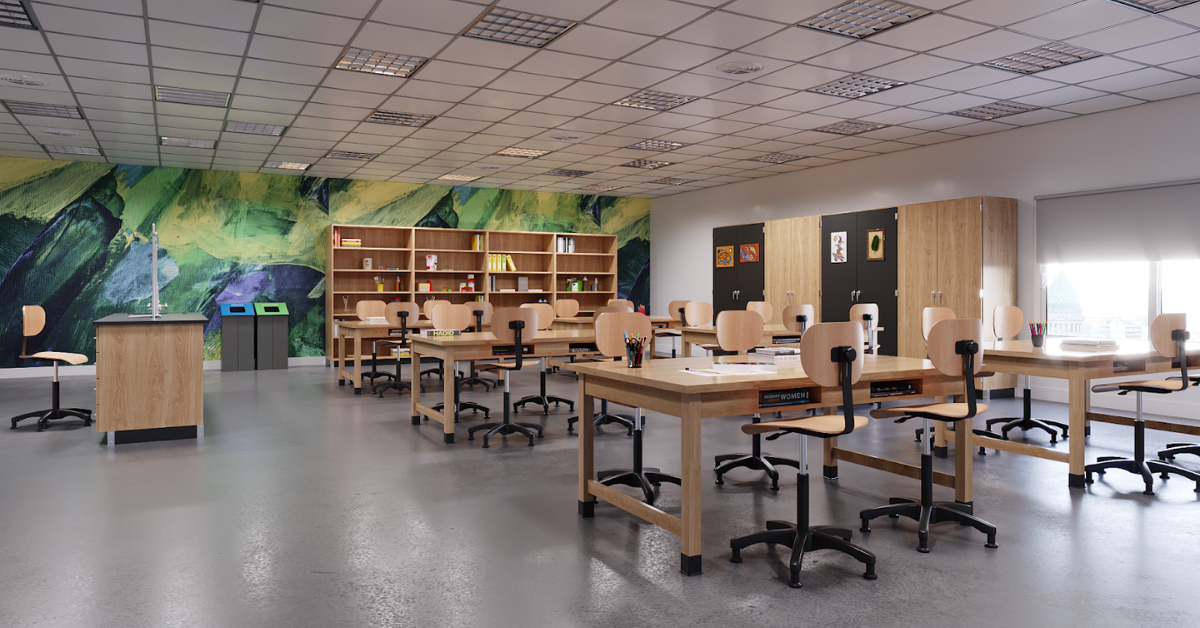Did you know? Classroom design can greatly impact how students and teachers engage in a learning environment. In fact, one study found that the physical space of schools can positively (or negatively) affect a student’s academic performance by as much as 25% in one school year.
So, how do you design a learning environment that is both functional and boosts learning performance? Check out these classroom design tips that you can utilize before students head back to school.
1. Create a collaborative space
Think of a typical classroom: individual desks and chairs facing the front of the room toward the teacher. It’s probably similar to the classrooms you were used to growing up. But as the years have passed, we’ve realized that students need to be taught more than just facts. Collaboration has actually been identified as one of four skills students need to excel in 21st-century careers. Students need to be able to communicate well and work together to solve problems, and our classrooms need to reflect that.
So, how do you create a functional and collaborative space? It all starts with choosing the right type of furniture. Realistically, collaborative learning spaces should accommodate all types of learning: independent one-on-one learning, small-group learning and large-group learning. That’s why we recommend easy-to-move, mobile furniture. Choosing mobile furniture will allow you to easily transition between group and independent learning. Students should also have access to a variety of seating options.
2. Be strategic about your color choices.
Color is one of the most important elements of a great classroom design. Believe it or not, colors aren’t just for looks. By adding certain colors to a learning space, you can capture attention, increase alertness, create calmness and even improve learning!
For example, orange accent furniture and decor will enhance the creativity, inspiration and mood of students. Learn how other colors affect classroom learning.
3. Make the most out of natural light.
The benefits of incorporating natural light into a learning space are endless. One of the biggest advantages of natural light is that it improves learning performance! According to California Energy Commission’s Public Interest Energy Research, classrooms with the most daylight had a 20% better learning rate in math and a 26% improved rate in reading compared to classrooms with little or no daylight.
Natural light can also improve students’ overall health! Studies show that natural light boosts your body’s vitamin D storage, aids in healthy eye development and even improves your mood.
With all these benefits, it’s a no-brainer that natural light should be incorporated into a classroom design. Working with a classroom that doesn’t have windows? Learn how to make the space more inviting and bright.
4. Add room for technology.
It’s no secret that technology plays a crucial role in today’s society – especially when it comes to learning. More and more teachers are leveraging technology as a tool to stimulate curiosity and inspire students’ desire to learn. Technology isn’t going away – it’s going to continue to grow and evolve. That’s why it’s important to allow for integration within your classroom design.
Not sure where to start with your classroom design? Talk to one of our experts today.

